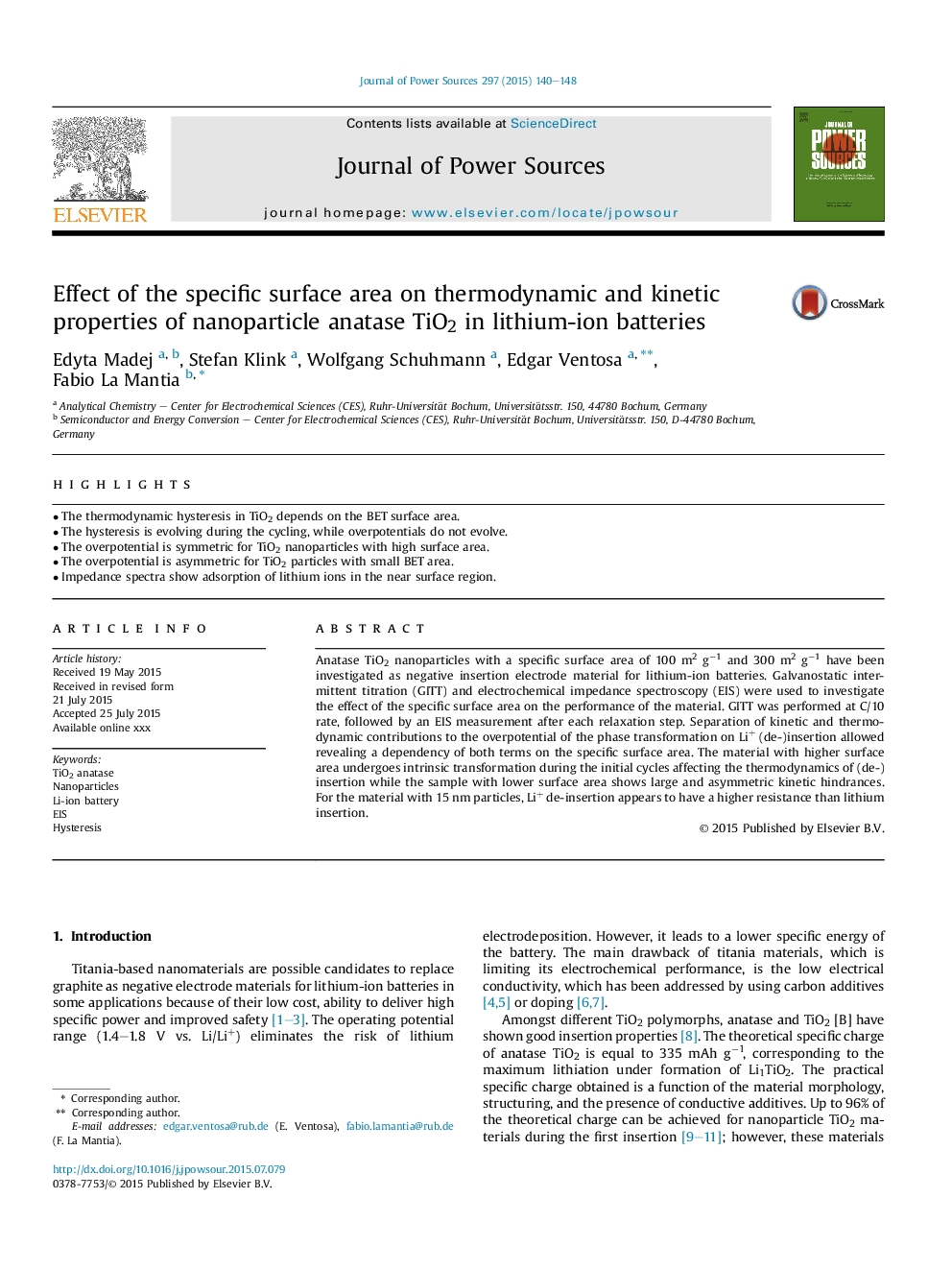| Article ID | Journal | Published Year | Pages | File Type |
|---|---|---|---|---|
| 7730538 | Journal of Power Sources | 2015 | 9 Pages |
Abstract
Anatase TiO2 nanoparticles with a specific surface area of 100Â m2Â gâ1 and 300Â m2Â gâ1 have been investigated as negative insertion electrode material for lithium-ion batteries. Galvanostatic intermittent titration (GITT) and electrochemical impedance spectroscopy (EIS) were used to investigate the effect of the specific surface area on the performance of the material. GITT was performed at C/10 rate, followed by an EIS measurement after each relaxation step. Separation of kinetic and thermodynamic contributions to the overpotential of the phase transformation on Li+ (de-)insertion allowed revealing a dependency of both terms on the specific surface area. The material with higher surface area undergoes intrinsic transformation during the initial cycles affecting the thermodynamics of (de-)insertion while the sample with lower surface area shows large and asymmetric kinetic hindrances. For the material with 15Â nm particles, Li+ de-insertion appears to have a higher resistance than lithium insertion.
Related Topics
Physical Sciences and Engineering
Chemistry
Electrochemistry
Authors
Edyta Madej, Stefan Klink, Wolfgang Schuhmann, Edgar Ventosa, Fabio La Mantia,
